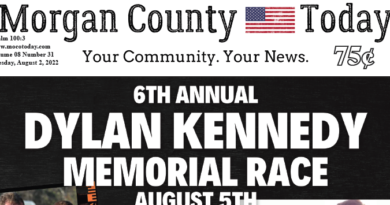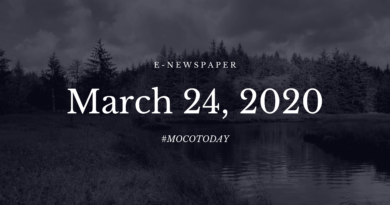Printing Bibles in America was once illegal.
Did you know that it used to be illegal to print the Bible in America?
It’s hard to believe but it is true. We will be showcasing a four part series to show you how this all came to be in our spotlight on American History. We have partnered with the American Bible Project for this series.
The Bible of the American Revolution
Isaiah Thomas, the first historian of American printing, reported that by 1775 there were 50 presses in the Colonies. Yet, prior to the American Revolution, there had been no publication of the English Bible in the Colonies. All demands for Bibles had to be met by importing Bibles from England and the Continent.
It is true that there was a scarcity of the type and paper necessary for the successful publication of a book as large as the Bible. Most of the presses were used for the impression of smaller publications, such as documents, proclamations, pamphlets, and papers.
However, there was a far more serious consideration that kept the English Bible from being printed by an American printer. It was, in fact, illegal to print the Bible in America.
Royal Restrictions on the Bible
Publication of the Bible in any lands under the British crown was restricted. In order to insure accuracy in printing, as well as control the stream of revenue, permission was given to the Oxford and Cambridge University Presses and to one other printer licensed by the king. In Scotland, special licenses were required.
Nevertheless, there is the fascinating story that an edition of the English Bible and several Testaments were printed in Boston about 1750. But no copy has ever been satisfactorily identified, for the paper and type would have been imported and, according to the story, a British imprint was employed.
While the Royal License applied only to the publication of the text of the King James Bible, without comment, there seems to have been no restriction on annotated editions. But these publications were usually large and elaborate, filled with engravings. They were, consequently, expensive and had to be financed by subscription. Several such projects had been proposed in the Colonies but had foundered for lack of support.
In addition, the restriction also did not apply to Bible translations. So in 1663, in Cambridge, Massachusetts, John Eliot printed a complete translation in the Algonquian language for the Native Americans of that area. Later, Christopher Saur and his sons in Germantown, Pennsylvania, printed three editions of the Bible in the German language, in 1743, 1763 and 1776.
Furthermore, the restriction did not apply to the printing of the New Testament by itself in English. This effort was undertaken for the first time in America by Philidelphia printer Robert Aitken in 1777. Over the next few years, Aitken would prove to be a pivotal figure in the printing of the Bible in America.
Aitken Comes to America
Born in Dalkeith, Scotland, in 1734, Aitken had learned the art of bookbinding and gone into the book business in Paisley. When he was about 35 years old, he left his wife and three children behind while he came to America to investigate the prospects of publishing and selling books here.
Shortly after his arrival in Philadelphia, he advertised for sale, for ready money only, a long list of “the very best books” and ordered printed two books—a Shorter Catechism and A Dialogue between Jockey and Maggy, or How to Court a Country Girl. These appeared with his imprint (but without printer identification) in 1770.
Evidently satisfied with the outlook, Aitken returned home to Scotland in November. By May 10, 1771, Aitken was back in Philadelphia with his wife, Janet, and two children, Jane and Robert, Jr., his third child having died while he was in America.
Aitken set up shop in Philadelphia on Front Street, nearly opposite the London Coffee House, with paper stock he had purchased for 50 pounds. The list of stock, as of June 11, 1771, is shown in his “Waste Book,” a large folio (now with the Pennsylvania Historical Society) which covers his accounts from 1771 to 1802.
The wide-ranging list includes, in addition to books and stationery items, yard goods, silver knee buckles, needle cases, a bird cage, six gilt school Bibles at five shillings, and twelve Pocket School Bibles at six shillings three pence. He thus established himself in Philadelphia as a bookseller and soon thereafter as a publisher and binder.
In January 1775, Aitken began publication of a sophisticated monthly, The Pennsylvania Magazine, with a subscription list of 600. His editor was Thomas Paine, future author of Common Sense and The American Crisis. Each issue was a large octavo-size magazine of 48 pages, and it has been described as one of the most attractive of early American periodicals.
The First New Testament in America
It was in 1777 that Aitken decided to test the market with a New Testament, a small book of 353 pages, measuring five and a half by three and an eighth inches. Other editions are recorded but according to The English Bible in America, no copies are known to be in existence. Subsequently, other publishers in America followed his lead with their editions of New Testaments:
- 1779 Isaac Collins, Trenton
- 1780 Thomas and Fleet, Boston
- Hall and Sellers, Philadelphia
- Francis Bailey, Philadelphia
- Isaac Collins, Trenton
- 1781 James Adams, Wilmington, Delaware
While Aitken’s “Waste Book” shows sales of Testaments in the last few days of August 1777, there are no more entries until after the British had left Philadelphia in June of 1778. Then, on July 18th, he advertised in the Pennsylvania Evening Post a new “neat” edition of the New Testament, just published, and sales reappear in his “Waste Book.”
Thus, the Algonquin Bible of John Eliot, the German Bible of Christopher Saur, and the English New Testament of Robert Aitken constitute the only known publications of the Bible in colonial America until the closing years of the War of the Revolution.
All of the above set the stage for the printing of a book that generations of historians would later refer to as “The Bible of the American Revolution.”
Adapted from the following source: Hills, Margaret T., The English Bible in America, New York: American Bible Society and The New York Public Library, 1961.
You can find more about the American Bible Project on their facebook page.




